一、字符串的初始化
1、定长字符数组
1>
char buf1[128] = {'a', 'b', 'c', 'd'};
printf("sizeof(buf1) = %d\n", sizeof(buf1)); //128
printf("strlen(buf1) = %d\n", strlen(buf1)); //4
printf("buf1[66] : %d\n", buf1[66]); //0
printf("buf1 : %s----\n", buf1); //abcd----定义一个128长度的字符数组,只初始化前4个字符,后面字符默认都是0。
2>
char buf5[128] = "abcd";
printf("sizeof(buf5) = %d\n", sizeof(buf5)); //128
printf("strlen(buf5) = %d\n", strlen(buf5)); //4
printf("buf5[66] : %d\n", buf5[66]); //0
printf("buf5 : %s----\n", buf5); //abcd----
printf("-------------------------\n");2、不定长的字符数组
1>
char buf2[] = { 'a', 'b', 'c', 'd' };
printf("sizeof(buf2) = %d\n", sizeof(buf2)); //4
printf("strlen(buf2) = %d\n", strlen(buf2)); //16(不确定长度,直到遇到0结束符为止)
printf("buf1 : %s----\n", buf2); //abcd烫烫烫烫abcd----不定长字符数组不会在最后一个字符的后面自动添加0,因为打印出来会出现乱码,直到内存空间遇到一个0为止。
2>
char buf3[] = "abcd";
printf("sizeof(buf3) = %d\n", sizeof(buf3)); //5
printf("strlen(buf3) = %d\n", strlen(buf3)); //4
printf("buf1 : %s----\n", buf3); //abcd字符串常量会默认结尾自动带一个0结束符,因此buf3的内存空间包括字符长度加一个结束符长度。
其中内存四区图是这样的:
3、字符指针初始化
char *buf4 = "abcd"; //abcd
printf("sizeof(buf4) = %d\n", sizeof(buf4)); //4
printf("strlen(buf4) = %d\n", strlen(buf4)); //4
printf("buf1 : %s----\n", buf4);其内存四区图:
二、通过字符数组和指针操作指针
void test2() {
char buf[128] = "abcdefg";
char *p = NULL;
for (int i = 0; i < strlen(buf); i++)
printf("%c ", buf[i]);
printf("\n");
p = &buf;
for (int i = 0; i < strlen(buf); i++)
printf("%c ", *(p + i));
printf("\n");
for (int i = 0; i < strlen(buf); i++)
printf("%c ", *(buf + i));
printf("\n");
}输出结果:
通过数组下标的方式本质是指针操作的方式是一致的,只不过数组下标的方式更符合程序员的编程习惯:
buf[i] ==》 buf[0 + i] ==》 *(buf + i)编译器做的工作就是这样的。
buf相当于是一个常量指针,实质是一个内存首地址,不能改变buf指向的内存首地址。也就是说不能进行buf++;这种操作:
因为出了函数,系统要释放buf的内存空间,是根据buf指向的首地址即buf的空间大小进行释放的,如果buf可以向上++,改变其指向,比如buf现在指向字符‘e’所在的内存首地址,那么abcd到时候就无法释放内存了,因此,干脆不让修改buf的指向,这也是程序设计的原因,为了保证内存的正确释放。
这也是内存首地址(buf)和普通指针(p)的区别:
普通指针可以进行下面的操作:
p = p + i;内存首地址不可以。
三、字符串一级指针内存模型
void test3() {
char buf1[20] = "aaaa";
char buf2[] = "bbbb";
char *p1 = "1111111";
char *p2 = (char*)malloc(100);
strcpy(p2, "33333");
}内存模型图:
strcpy的过程就是把全局区的”33333”拷贝到堆区。
四、字符串的copy操作演变
1、
void copy1() {
char a[] = "i am a student";
char buf[64];
int i = 0;
for (i = 0; a[i] != '\0'; i++)
buf[i] = a[i];
buf[i] = '\0';
printf("a : %s\n", a);
printf("buf : %s\n", buf);
}输出结果:
这里是最简单的遍历拷贝,只需要注意:由于循环中当a[i] = ‘\0’时跳出循环,故buf并没有把‘\0’烤进去,要手动把buf最后一个字符后面的字符设为0,否则打印buf时,会直到遇到’\0’才会停止打印,缺省
buf[i] = '\0';这句的输出结果为:
便会出现乱码。
2、下面都是通过接口实现的,正式公司编写代码中需求的
void copy2(char *from, char *to) {
for (; *from != '\0'; from++, to++) {
*to = *from;
}
*to = '\0';
}int main(){
char *from = "abcdefg";
char buf[64];
copy2(from, buf);
printf("buf : %s\n", buf);
system("pause");
return 0;
}输出结果:
这里用到指针间接修改实参的应用,画一个内存四区图:
开始main函数和copy2函数中的from指针都指向全局区“abcdefg”的首地址,to指针指向main函数buf的首地址,循环过程中,copy2函数中的from和to的指向不断改变,直到from所指向的内存中存放的是0位置,这个时候跳出循环,并没有把0拷贝进to所指向的内存中,因此仍然要手动加入0表示字符串结束。
3、
void copy3(char *from, char *to) {
for (; *from != '\0';) {
*to++ = *from++;
}
*to = '\0';
}int main(){
char *from = "abcdefg";
char buf[64];
copy3(from, buf);
printf("buf : %s\n", buf);
system("pause");
return 0;
}输出结果同上,这里把赋值和++操作合体了:
*to++ = *from++;++操作的优先级大于*操作符,因此先执行++操作,但由于是后++,故上面实际执行顺序是:
*to = *from;
from++;
to++;4、继续演变
void copy4(char *from, char *to) {
while ((*to = *from) != '\0') {
from++;
to++;
}
}int main(){
char *from = "abcdefg";
char buf[64];
copy4(from, buf);
printf("buf : %s\n", buf);
system("pause");
return 0;
}输出结果还是同上,此时就不需要手动添加结束符了,while循环中会自动添加。
5、继续演变
void copy5(char *from, char *to) {
while (*to++ = *from++) {
}
}int main(){
char *from = "abcdefg";
char buf[64];
copy5(from, buf);
printf("buf : %s\n", buf);
system("pause");
return 0;
}输出结果仍然同上。
可以看到代码越来越简洁,这就是整个字符串copy的演变过程。
五、字符串的copy操作强化
1、不能往NULL内存空间中拷贝
void copy5(char *from, char *to) {
while (*to++ = *from++) {
}
}
int main(){
char *from = "abcdefg";
char buf[64];
{
char* to = NULL;
copy5(from, to);
}
system("pause");
return 0;
}执行这一段代码,会报错:
NULL主要用来避免野指针问题,NULL内存空间是由系统来保护的内存空间,是不允许往里面拷贝任何东西的。所以一旦执行:
*to = *from;这样的拷贝语句,程序就会down掉。
此时就要对代码进行优化:
int copy6(char *from, char *to) {
if (to == NULL || from == NULL)
return - 1;
while (*to++ = *from++) {
}
return 0;
}int main(){
int ret = 0;
char *from = "abcdefg";
char buf[64];
{
char* to = NULL;
ret = copy6(from, to);
if (ret != 0)
printf("func copy6 err: %d\n", ret);
}
system("pause");
return 0;
}输出结果:
要对传来的指针进行判断,判断是否指向NULL,并通过函数返回值告诉被调用函数是否执行成功。
2、函数调用中通过指针遍历时,借助中间指针变量
对于没有中间指针变量的函数:
int copy7_err(char *from, char *to) {
if (to == NULL || from == NULL)
return -1;
while (*to++ = *from++) {
}
printf("from : %s\n", from);
return 0;
}int main(){
int ret = 0;
char *from = "abcd";
char buf[64];
printf("copy7 begin\n");
copy7_err(from, buf);
printf("copy7 end\n");
system("pause");
return 0;
}输出结果:
可以看到打印from什么都没有,在函数copy7_err中不断改变from的指向,最终指向了0,必然打印的时候打印0,就会什么都没有,这就造成有些时候在函数后面需要打印from的情况,这时候就需要中间指针变量:
int copy7_good(char *from, char *to) {
if (to == NULL || from == NULL)
return -1;
char *fromtemp = from;
char *totemp = to;
while (*totemp++ = *fromtemp++) {
}
printf("from : %s\n", from);
return 0;
}int main(){
int ret = 0;
char *from = "abcd";
char buf[64];
printf("copy7 begin\n");
copy7_good(from, buf);
printf("copy7 end\n");
system("pause");
return 0;
}输出结果:
借助中间指针变量,到时候打印from就不会出现问题,from仍然还是指向内存首地址,没有改变指向。这是编程过程中经常出现的错误,切记,切记。
六、字符串项目开发模型
1、字符串查找(strstr)
int strstr_interface(char* mystr /*in*/, char* substr /*in*/, int *count /*out*/) {
int ret = 0;
if (mystr == NULL || substr == NULL || substr == NULL) {
ret = -1;
printf("func strstr_interface() mystr == NULL || substr == NULL || substr == NULL err : %d\n", ret);
return ret;
}
char *mystrtemp = mystr;
int counttemp = 0;
while (mystrtemp = strstr(mystrtemp, substr)) {
mystrtemp += strlen(substr);
counttemp++;
if (counttemp == '\0')
break;
}
*count = counttemp;
return ret;
}int main(){
int ret = 0;
char* mystr = "11abcd2117732abcd093902shabcd239sdfjajqqabcd";
char* substr = "abcd";
int count = 0;
ret = strstr_interface(mystr, substr, &count);
if (ret != 0) {
printf("func strstr_interface() err: %d\n", ret);
}
printf("count : %d\n", count);
system("pause");
return 0;
}输出结果为:
strstr函数实现子字符串在母字符串中出现的第一个位置,这段代码的精髓不在于如何实现,而是如何实现健壮的代码:
1、count不作为返回值返回给调用函数,而是作为形参传递值,充分利用指针间接赋值的特性(正是指针可以实现返回多个参数的情况,利用形参进行返回)
2、要对传入的指针判断是否为空,检测错误情况,并将错误返回给调用函数;
未完,待续!










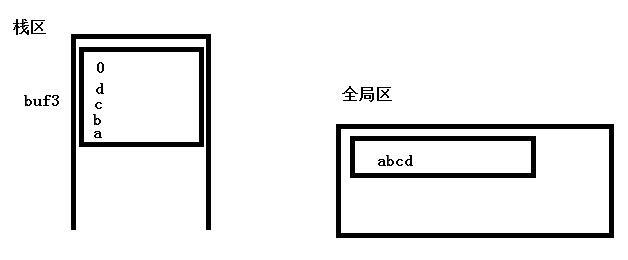
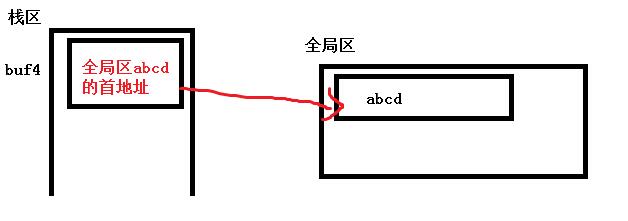

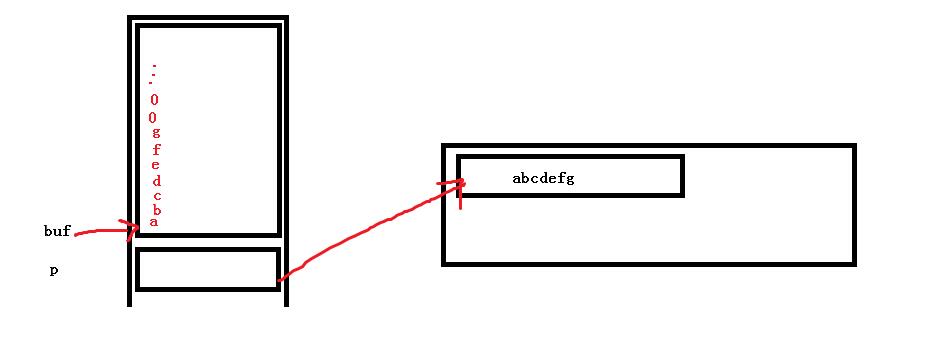




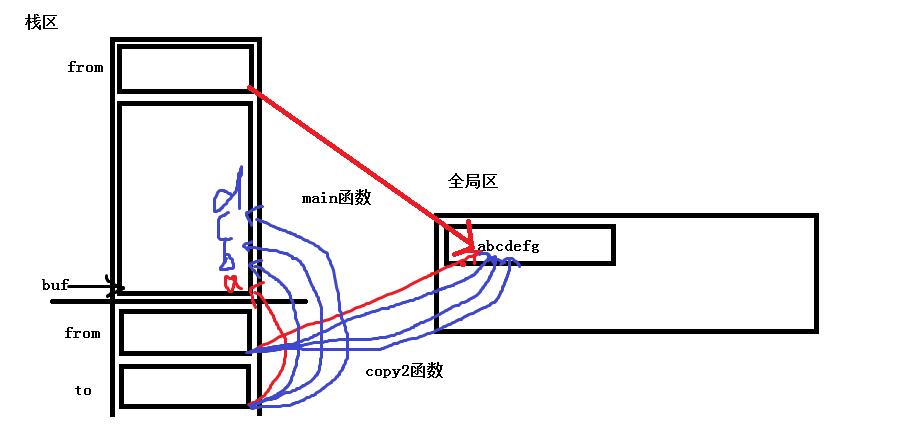
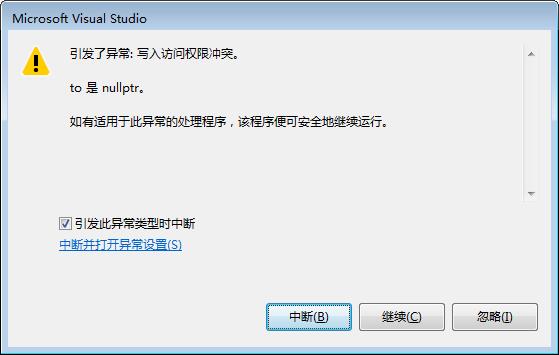


















 2095
2095

 被折叠的 条评论
为什么被折叠?
被折叠的 条评论
为什么被折叠?








